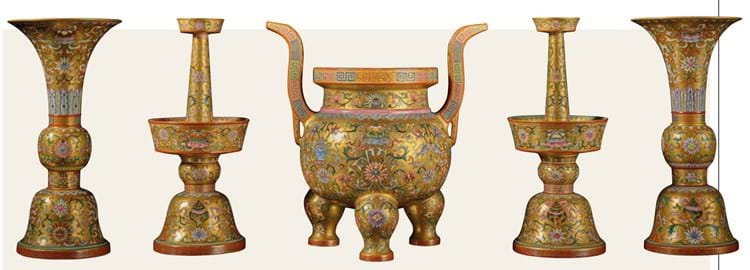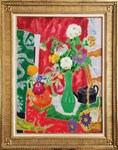
It is thought to have been acquired in China about a century ago by Denman Waldo Ross (1853-1935), an American painter, collector, patron and professor of art at Harvard University. In the 1920s it was given as a gift to John Arthur MacLean (1879-1964) and has remained in the family ever since.
Records list 16 deliveries of gold-ground sets of wu gong (a censer, a pair of candlesticks, and a pair of beaker vases) during the long reign of Qianlong destined for the Temple Hall of the Forbidden City, the emperor’s summer residence in Yehol (Rehe), and even a set made for the emperor’s travelling palace in Suzhou on the occasion of his last Southern inspection tour in 1784.
However, the only other complete wu gong set of gold-ground porcelain altar vessels that appears to have survived resides in the Palace Museum, Beijing.
As a curator, lecturer and collector of Asian works of art, MacLean was instrumental in the formation of the Asian collections in several American museums. Over five decades he worked in the Oriental departments at the Museum of Fine Arts, Boston, the Cleveland Museum of Art, the Art Institute of Chicago, the John Herron Art Institute (later the Indianapolis Museum of Art) and the Toledo Museum of Art.













